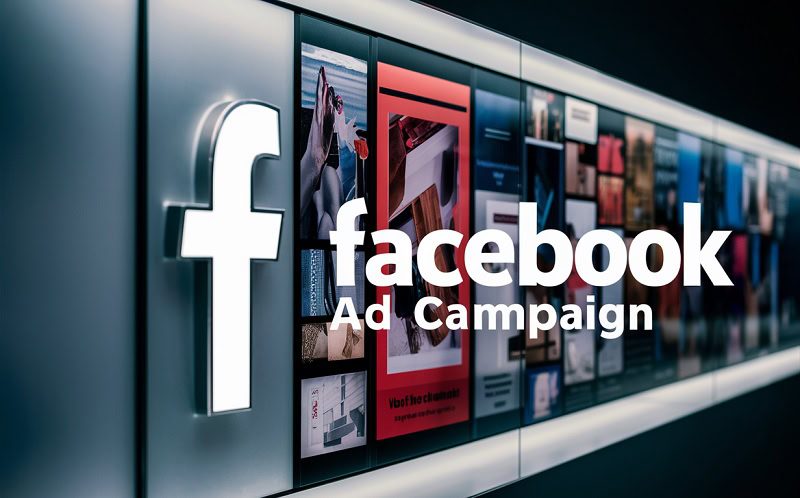Which is better for generating leads – Facebook lead forms or landing pages?
This is a question that many marketers and business owners ask themselves when planning their lead-generation campaigns.
Both options have their merits, but understanding their key differences can help you make an informed decision and achieve the best results for your business.
According to Unbounce, the average conversion rate for landing pages across all industries is around 4.3%, while Facebook lead forms have been shown to have a significantly higher conversion rate of 12.54%, according to Wordstream.

Boost E-Commerce ROI: Download Our Free CPA & ROAS Calculator
So, what distinguishes these two lead generation methods, and how can you choose the right one for your campaign?
Here, we’ll examine five major differences between Facebook lead forms and landing pages.
By the end of this article, you’ll have a clear understanding of each option’s pros and cons and be equipped to make the best choice for your business.

Image by Coffee Bean from Pixabay
1. Ease of use
One of the biggest differences between Facebook lead forms and landing pages is the ease of use for potential leads.
With Facebook lead forms, users can fill out their information and submit it without leaving the Facebook platform. This means they don’t have to navigate to a separate website or landing page, which can be a barrier for some users.
Facebook lead forms are designed to be mobile-friendly and can be completed with just a few taps on a smartphone.
The forms can also pre-fill certain fields, such as name and email address if the user has previously shared this information with Facebook. This makes the process even faster and more convenient for the user.
In contrast, landing pages require users to click through to a separate website and fill out a form on that page.
While landing pages can also be optimised for mobile devices, the process is not as seamless as with Facebook lead forms. Users may sometimes need to zoom in or scroll to view the entire form, which can be frustrating and lead to abandoned submissions.
2. Targeting options
Another key difference between Facebook lead forms and landing pages is the targeting options available.
With Facebook lead forms, you can take advantage of the platform’s extensive targeting capabilities to reach your ideal audience.
Facebook allows you to target users based on demographics, interests, behaviours, and more. You can also create lookalike audiences based on your existing customer data, which can help you find new leads that are similar to your best customers.
Additionally, Facebook lead forms can be integrated with other Facebook ad formats, such as carousel or video ads.
This allows you to create a more engaging and interactive user experience and potentially increase your conversion rates.
Conversely, landing pages may also rely on other methods of driving traffic, such as search engine optimisation, pay-per-click advertising, or email marketing.
While these methods can be effective, they may not offer the same level of targeting precision as Facebook ads.
3. Cost
Cost is another factor to consider when choosing between Facebook lead forms and landing pages. While both options require an investment of time and resources, they differ in terms of the specific costs involved.
With Facebook lead forms, the main cost is the advertising spend required to promote your form and reach your target audience. The cost per lead can vary depending on your targeting options, ad format, and competition for ad space.
Landing pages, on the other hand, landing pages may require a larger upfront investment in design, development, and hosting costs.
You may need to hire a web designer or developer to create a high-quality landing page that effectively converts visitors into leads.
Additionally, landing pages may require ongoing maintenance and optimisation to ensure they continue to perform well over time. This can include A/B testing different page elements, updating content, and fixing technical issues.
4. Lead quality
Lead quality is another important consideration when comparing Facebook lead forms and landing pages.
While Facebook lead forms may generate a higher volume of leads, the quality of those leads can sometimes be lower than those generated through landing pages.
This is because Facebook lead forms are often used as a quick and easy way for users to sign up for something without necessarily considering whether they are truly interested in the product or service being offered.
Some people submit the form on a whim or because they were on landing pages with a special offer, but they may need more time to be ready to purchase or engage further with the brand.
Landing pages, on the other hand, landing pages typically require more effort and commitment from the user. They have to actively seek out the landing page, read through the content, and make a decision to fill out the form.
This self-selection process can lead to higher-quality leads that are more likely to convert into customers.
That being said, there are ways to improve lead quality with Facebook lead forms.
One strategy is to use qualifying questions within the form to screen out leads that may not fit your business well.
You can also use retargeting to show follow-up ads to leads who have already submitted a form, which can help nurture them further down the sales funnel.
5. Follow-up and nurturing
Finally, it’s important to consider the follow-up and nurturing process when evaluating Facebook lead forms and landing pages.
Once a lead has submitted their information, what happens next can make a big difference in whether they ultimately become customers.
With Facebook lead forms, leads are typically delivered to the business via email or a CRM integration. It’s up to the business to then follow up with those leads in a timely manner and provide them with relevant information and offers.
One advantage of Facebook lead forms is that they can be integrated with Facebook Messenger, allowing businesses to automatically send follow-up messages to leads and continue the conversation within the platform. This can be a powerful way to build relationships and guide leads towards a sale.
Landing pages also require a follow-up process, but the specific steps may differ depending on the tools and systems being used.
Leads may be automatically added to an email marketing list, for example, or assigned to a sales representative for personal outreach.
Regardless of the method used, the key is to have a clear and effective follow-up strategy in place. This may include a series of automated emails, personalised outreach from a sales team, or a combination of both. The goal is to keep leads engaged and moving towards a conversion while providing value and building trust along the way.
Conclusion
Both Facebook lead forms and landing pages can be practical tools for generating leads and growing your business.
The key is to understand their differences and choose the option that best aligns with your goals, target audience, and resources.
If you’re looking for a quick and easy way to generate a high volume of leads, Facebook lead forms may be the way to go. But if lead quality and long-term nurturing are your top priorities, a well-designed landing page may be the better choice.
Ultimately, the most successful lead generation campaigns often combine both tactics.
By leveraging the strengths of each option and creating a seamless experience for users, you can maximise your results and drive more conversions for your business.






